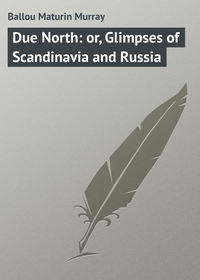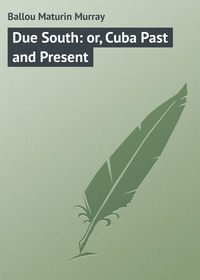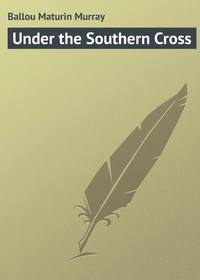 полная версия
полная версияEquatorial America
Bridgetown is situated at the west end of the island on the open roadstead of Carlisle Bay, and has a population of over twenty-five thousand. Barbadoes lies about eighty miles to the windward of St. Vincent, its nearest neighbor, and is separated from Europe by four thousand miles of the Atlantic Ocean. It is comparatively removed from the chain formed by the Windward Isles, its situation being so isolated that it remained almost unnoticed until a century had passed after Columbus's first discovery in these waters. The area of the British possessions in the West Indies is about one seventh of the islands. It is often stated that Barbadoes is nearly as large as the Isle of Wight, but the fact is, it exceeds that island in superficial area, being a little over fifty-five miles in circumference. The reader will perhaps remember that it was here Addison laid the scene of his touching story of "Inkle and Yarico," published so many years ago in the "Spectator."
Though it is not particularly well laid out, Bridgetown makes a very pleasing picture, as a whole, when seen from the harbor. Here and there a busy windmill is mixed with tall and verdant tropical trees, backed by far-reaching fields of yellow sugar-cane, together with low, sloping hills. The buildings are mostly of stone, or coral rock, and the town follows the graceful curve of the bay. The streets are macadamized and lighted with gas, but are far too narrow for business purposes. The island is about twenty-one miles long and between fourteen and fifteen broad, the shores being nearly inclosed in a cordon of coral reefs, some of which extend for two or three miles seaward, demanding of navigators the greatest care on seeking a landing, though the course into the roads to a suitable anchorage is carefully buoyed.
Barbadoes was originally settled by the Portuguese, who here found the branches of a certain forest tree covered with hair-like hanging moss, from whence its somewhat peculiar name, Barbadoes, or the "bearded place," is supposed to have been derived. Probably this was the Indian fig-tree, still found here, and which lives for many centuries, growing to enormous proportions. In India, Ceylon, and elsewhere in Asia, it is held sacred. The author has seen one of these trees at Kandy, in the island of Ceylon, under which sacred rites have taken place constantly for a thousand years or more, and whose widespread branches could shelter five hundred people from the heat of the sun. It stands close by the famous old Buddhist temple wherein is preserved the tooth of the prophet, and before which devout Indians prostrate themselves daily, coming from long distances to do so. Indeed, Kandy is the Mecca of Ceylon.
A good share of even the reading public of England would be puzzled to tell an inquirer exactly where Barbadoes is situated, while most of those who have any idea about it have gained such knowledge as they possess from Captain Marryat's clever novel of "Peter Simple," where the account is, to be sure, meagre enough. Still later, those who have read Anthony Trollope's "West Indies and the Spanish Main" have got from the flippant pages of that book some idea of the island, though it is a very disagreeable example of Trollope's pedantic style.
"Barbadoes? Barbadoes?" said a society man to the writer of these pages, in all seriousness, just as he was about to sail from New York, "that's on the coast of Africa, is it not?" "Oh, no," was the reply, "it is one of the islands of the Lesser Antilles."
"Where are the Antilles, pray?" "You must surely know."
"But I do not, nevertheless; haven't the remotest idea. Fact is, geography never was one of my strong points."
With which remark we silently agreed, and yet our friend is reckoned to be a fairly educated, cultured person, as these expressions are commonly used. Probably he represents the average geographical knowledge of one half the people to be met with in miscellaneous society.
This is the first English possession where the sugarcane was planted, and is one of the most ancient colonies of Great Britain. It bears no resemblance to the other islands in these waters, that is, topographically, nor, indeed, in the character of its population, being entirely English. The place might be a bit taken out of any shire town of the British home island, were it only a little more cleanly and less unsavory; still it is more English than West Indian. The manners and customs are all similar to those of the people of that nationality; the negroes, and their descendants of mixed blood, speak the same tongue as the denizens of St. Giles, London. The island has often been called "Little England." There is no reliable history of Barbadoes before the period when Great Britain took possession of it, some two hundred and sixty years ago. Government House is a rather plain but pretentious dwelling, where the governor has his official and domestic residence. In its rear there is a garden, often spoken of by visitors, which is beautified by some of the choicest trees and shrubs of this latitude. It is really surprising how much a refined taste and skillful gardening can accomplish in so circumscribed a space.
Barbadoes is somewhat remarkable as producing a variety of minerals; among which are coal, manganese, iron, kaolin, and yellow ochre. There are also one or two localities on the island where a flow of petroleum is found, of which some use is made. It is called Barbadoes tar, and were the supply sufficient to warrant the use of refining machinery, it would undoubtedly produce a good burning fluid. There is a "burning well," situated in what is known as the Scotland District, where the water emerging from the earth forms a pool, which is kept in a state of ebullition from the inflammable air or gas which passes through it. This gas, when lighted by a match, burns freely until extinguished by artificial means, not rising in large enough quantities to make a great flame, but still sufficient to create the effect of burning water, and forming quite a curiosity.
There are no mountains on the island, but the land is undulating, and broken into hills and dales; one elevation, known as Mount Hillaby, reaches a thousand feet and more above the level of tide waters.
One of the most serious pests ever known at Barbadoes was the introduction of ants, by slave-ships from Africa. No expedient of human ingenuity served to rid the place of their destructive presence, and it was at one time seriously proposed to abandon the island on this account. After a certain period nature came to the rescue. She does all things royally, and the hurricane of 1780 completely annihilated the vermin. Verily, it was appropriate to call Barbadoes in those days the Antilles! It appears that there is no affliction quite unmixed with good, and that we must put a certain degree of faith in the law of compensation, however great the seeming evil under which we suffer. To our limited power of comprehension, a destructive hurricane does seem an extreme resort by which to crush out an insect pest. The query might even arise, with some minds, whether the cure was not worse than the disorder.
The exports from the island consist almost wholly of molasses, sugar, and rum, products of the cane, which grows all over the place, in every nook and corner, from hilltop to water's edge. The annual export, as already intimated, is considerably over sixty thousand hogsheads. Sugar cannot, however, be called king of any one section, since half of the amount manufactured in the whole world is the product of the beet root, the growth of which is liberally subsidized by more than one European government, in order to foster local industry. Like St. Thomas, this island has been almost denuded of its forest growth, and is occasionally liable, as we have seen, to destructive hurricanes.
Bridgetown is a place of considerable progress, having several benevolent and educational institutions; it also possesses railway, telephone, and telegraphic service. Its export trade aggregates over seven million dollars per annum, to accommodate which amount of commerce causes a busy scene nearly all the time in the harbor. The steam railway referred to connects the capital with the Parish of St. Andrews, twenty-one miles away on the other side of the island, its terminus being at the thrifty little town of Bathsheba, a popular resort, which is noted for its fine beach and excellent sea bathing.
The cathedral is consecrated to the established religion of the Church of England, and is a picturesque, time-worn building, surrounded, after the style of rural England, by a quaint old graveyard, the monuments and slabs of which are gray and moss-grown, some of them bearing dates of the earlier portion of the sixteenth century. This spot forms a very lovely, peaceful picture, where the graves are shaded by tree-ferns and stately palms. Somehow one cannot but miss the tall, slim cypress, which to the European and American eye seems so especially appropriate to such a spot. There were clusters of low-growing mignonette, which gave out a faint perfume exactly suited to the solemn shades which prevailed, and here and there bits of ground enameled with blue-eyed violets. The walls of the inside of the church are covered with memorial tablets, and there is an organ of great power and sweetness of tone.
The "Ice House," so called, at Bridgetown is a popular resort, which everybody visits who comes to Barbadoes. Here one can find files of all the latest American and European papers, an excellent café, with drinks and refreshments of every conceivable character, and can purchase almost any desired article from a toothpick to a set of parlor furniture. It is a public library, an exchange, a "Bon Marché," and an artificial ice manufactory, all combined. Strangers naturally make it a place of rendezvous. It seemed to command rather more of the average citizen's attention than did legitimate business, and one is forced to admit that although the drinks which were so generously dispensed were cool and appetizing, they were also very potent. It was observed that some individuals, who came into the hospitable doors rather sober and dejected in expression of features, were apt to go out just a little jolly.
The Ice House is an institution of these islands, to be found at St. Thomas, Demerara, and Trinidad, as well as at Barbadoes. Havana has a similar retreat, but calls it a café, situated on the Paseo, near the Tacon Theatre.
The population of the island amounts to about one hundred and seventy-two thousand, – the census of 1881 showed it to be a trifle less than this, – giving the remarkable density of one thousand and more persons to the square mile, thus forming an immense human beehive. It is the only one of the West Indian islands from which a certain amount of emigration is necessary annually. The large negro population makes labor almost incredibly cheap, field-hands on the plantations being paid only one shilling per day; and yet, so ardent is their love of home – and the island is home to them – that only a few can be induced to leave it in search of better wages. When it is remembered that the State of Massachusetts, which is considered to be one of the most thickly populated sections of the United States, contains but two hundred and twenty persons to the square mile, the fact that this West Indian island supports over one thousand inhabitants in the same average space will be more fully appreciated. Notwithstanding this crowded state of the population, we were intelligently informed that while petty offenses are common, there is a marked absence of serious crimes.
One sees few if any signs of poverty here. It is a land of sugar-cane, yams, and sweet potatoes, very prolific, and very easily tilled. Some of the most prosperous men on the island are colored planters, who own their large establishments, though born slaves, perhaps on the very ground they now own. They have by strict economy and industry saved money enough to make a fair beginning, and in the course of years have gradually acquired wealth. One plantation, owned by a colored man, born of slave parents, was pointed out to us, with the information that it was worth twenty thousand pounds sterling, and that its last year's crop yielded over three hundred hogsheads of sugar, besides a considerable quantity of molasses.
England maintains at heavy expense a military depot here, from which to draw under certain circumstances. There is no local necessity for supporting such a force. Georgetown is a busy place. Being the most seaward of the West Indies, it has become the chief port of call for ships navigating these seas. The Caribbees are divided by geographers into the Windward and Leeward islands, in accordance with the direction in which they lie with regard to the prevailing winds. They are in very deep water, the neighboring sea having a mean depth of fifteen hundred fathoms. Being so far eastward, Barbadoes enjoys an exceptionally equable climate, and it is claimed for it that it has a lower thermometer than any other West Indian island. Its latitude is 13° 4' north, longitude 59° 37' west, within eight hundred miles of the equator. The prevailing wind blows from the northeast, over the broad, unobstructed Atlantic, rendering the evenings almost always delightfully cool, tempered by this grateful tonic breath of the ocean.
Trafalgar Square, Bridgetown, contains a handsome fountain, and a bronze statue of Nelson which, as a work of art, is simply atrocious. From this broad, open square the tramway cars start, and it also forms a general business centre.
The home government supports, besides its other troops, a regiment of negroes uniformed as Zouaves and officered by white men. The police of Bridgetown are also colored men. Slavery was abolished here in 1833. Everything is so thoroughly English, that only the temperature, together with the vegetation, tells the story of latitude and longitude. The soil has been so closely cultivated as to have become partially exhausted, and this is the only West Indian island, if we are correctly informed, where artificial enrichment is considered necessary to stimulate the native soil, or where it has ever been freely used. "I question," said an intelligent planter to us, "whether we should not be better off to-day, if we had not so overstimulated, in fact, burned out, our land with guano and phosphates." These are to the ground like intoxicants to human beings, – if over-indulged in they are fatal, and even the partial use is of questionable advantage. The Chinese and Japanese apply only domestic refuse in their fields as a manure, and no people obtain such grand results as they do in agriculture. They know nothing of patent preparations employed for such purposes, and yet will render a spot of ground profitable which a European would look upon as absolutely not worth cultivating.
In any direction from Bridgetown going inland, miles upon miles of plantations are seen bearing the bright green sugar-cane, turning to yellow as it ripens, and giving splendid promise for the harvest. Here and there are grouped a low cluster of cabins, which form the quarters of the negroes attached to the plantation, while close at hand the tall chimney of the sugar mill looms over the surrounding foliage. A little one side, shaded by some palms, is the planter's neat and attractive residence, painted snow white, in contrast to the deep greenery surrounding it, and having a few flower beds in its front.
The Marine Hotel, which is admirably situated on a rocky point at Hastings, three hundred feet above the beach, is about a league from the city, and forms a favorite resort for the townspeople. The house is capable of accommodating three hundred guests at a time. Its spacious piazzas fronting the ocean are constantly fanned by the northeast trades from October to March. Some New York families regard the place as a choice winter resort, the thermometer rarely indicating over 80° Fahr., or falling below 70°. This suburb of Hastings is the location of the army barracks, where a broad plain affords admirable space for drill and military manœuvres. There is a monument at Hastings, raised to the memory of the victims of the hurricane of 1831, which seems to be rather unpleasantly suggestive of future possibilities. Near at hand is a well-arranged mile racecourse, a spot very dear to the army officers, where during the racing season any amount of money is lost and won. There seems to be something in this tropical climate which incites to all sorts of gambling, and the habit among the people is so common as to be looked upon with great leniency. Just so, at some of the summer resorts of the south of France, Italy, and Germany, ladies or gentlemen will frankly say, "I am going to the Casino for a little gambling, but will be back again by and by."
The roads in the vicinity of Bridgetown are admirably kept, all being macadamized, but the dust which rises from the pulverized coral rock is nearly blinding, and together with the reflection caused by the sun on the snow white roads proves very trying to the eyesight. The dust and glare are serious drawbacks to the enjoyment of these environs.
As we have said, hurricanes have proved very fatal at Barbadoes. In 1780, four thousand persons were swept out of existence in a few hours by the irresistible fury of a tornado. So late as 1831, the loss of life by a similar visitation was over two thousand, while the loss of property aggregated some two million pounds sterling. The experience has not, however, been so severe here as at several of the other islands. At the time of the hurricane just referred to, Barbadoes was covered with a coat of sulphurous ashes nearly an inch thick, which was afterwards found to have come from the island of St. Vincent, where what is called Brimstone Mountain burst forth in flames and laid that island also in ashes. It is interesting to note that there should have been such intimate relationship shown between a great atmospheric disturbance like a hurricane and an underground agitation as evinced by the eruption of a volcano.
It should be mentioned that these hurricanes have never been known to pass a certain limit north or south, their ravages having always been confined between the eleventh and twenty-first degrees of north latitude.
It appears that some curious Carib implements were found not long since just below the surface of the earth on the south shore of the bay, which are to be forwarded to the British Museum, London. These were of hard stone, and were thought by the finders to have been used by the aborigines to fell trees. Some were thick shells, doubtless employed by the Indians in the rude cultivation of maize, grown here four or five hundred years ago. It was said that these stone implements resembled those which have been found from time to time in Norway and Sweden. If this is correct, it is an important fact for antiquarians to base a theory upon. Some scientists believe that there was, in prehistoric times, an intimate relationship between Scandinavia and the continent of America.
Though there are several public schools in Bridgetown, both primary and advanced, we were somehow impressed with the idea that education for the common people was not fostered in a manner worthy of a British colony of so long standing; but this is the impression of a casual observer only. There is a college situated ten or twelve miles from the city, founded by Sir Christopher Codrington, which has achieved a high reputation as an educational institution in its chosen field of operation. It is a large structure of white stone, well-arranged, and is, as we were told, consistent with the spirit of the times. It has the dignity of ripened experience, having been opened in 1744. The professors are from Europe. A delicious fresh water spring rises to the surface of the land just below the cliff, at Codrington College, a blessing which people who live in the tropics know how to appreciate. There is also at Bridgetown what is known as Harrison's College, which, however, is simply a high school devoted exclusively to girls.
The island is not exempt from occasional prevalence of tropical fevers, but may be considered a healthy resort upon the whole. Leprosy is not unknown among the lower classes, and elephantiasis is frequently to be met with. This disease is known in the West Indies as the "Barbadoes Leg." Sometimes a native may be seen on the streets with one of his legs swollen to the size of his body. There is no known cure for this disease except the surgeon's knife, and the removal of the victim from the region where it first developed itself. The author has seen terrible cases of elephantiasis among the natives of the Samoan group of islands, where this strange and unaccountable disease is thought to have reached its most extreme and repulsive development. Foreigners are seldom if ever afflicted with it, either in the West Indies or the South Pacific.
We are to sail to-night. A few passengers and a quantity of freight have been landed, while some heavy merchandise has been received on board, designed for continental ports to the southward. The afternoon shadows lengthen upon the shore, and the sunset hour, so brief in this latitude, approaches. The traveler who has learned to love the lingering twilight of the north misses these most charming hours when in equatorial regions, but as the goddess of night wraps her sombre mantle about her, it is so superbly decked with diamond stars that the departed daylight is hardly regretted. It is like the prompter's ringing up of the curtain upon a complete theatrical scene; the glory of the tropical sky bursts at once upon the vision in all its completeness, its burning constellations, its solitaire brilliants, its depth of azure, and its mysterious Milky Way.
While sitting under the awning upon deck, watching the gentle swaying palms and tall fern-trees, listening to the low drone of busy life in the town, and breathing the sweet exhalations of tropical fruits and flowers, a trance-like sensation suffuses the brain. Is this the dolce far niente of the Italians, the sweet do-nothing of the tropics? To us, however defined, it was a waking dream of sensuous delight, of entire content. How far away sounds the noise of the steam-winch, the sharp chafing of the iron pulleys, the prompt orders of the officer of the deck, the swinging of the ponderous yards, the rattling of the anchor chain as it comes in through the hawse hole, while the ship gradually loses her hold upon the land. With half closed eyes we scarcely heard these many significant sounds, but floated peacefully on in an Eden of fancy, quietly leaving Carlisle Bay far behind.
Our course was to the southward, while everything, high and low, was bathed in a flood of shimmering moonlight, the magic alchemy of the sky, whose influence etherealizes all upon which it rests.
CHAPTER IV
Curious Ocean Experiences. – The Delicate Nautilus. – Flying-Fish. – The Southern Cross. – Speaking a Ship at Sea. – Scientific Navigation. – South America as a Whole. – Fauna and Flora. – Natural Resources of a Wonderful Land. – Rivers, Plains, and Mountain Ranges. – Aboriginal Tribes. – Population. – Political Divisions. – Civil Wars. – Weakness of South American States.
The sudden appearance of a school of flying-fish gliding swiftly through the air for six or eight rods just above the rippling waves, and then sinking from sight; the sportive escort of half a hundred slate-colored porpoises, leaping high out of the water on either bow of the ship only to plunge back again, describing graceful curves; the constant presence of that sullen tiger of the ocean, the voracious, man-eating shark, betrayed by its dorsal fin showing above the surface of the sea; the sporting of mammoth whales, sending columns of water high in air from their blowholes, and lashing the waves playfully with their broad-spread tails, are events at sea too commonplace to comment upon in detail, though they tend to while away the inevitable monotony of a long voyage.
Speaking of flying-fish, there is more in the flying capacity of this little creature than is generally admitted, else why has it wings on the forward part of its body, each measuring seven inches in length? If designed only for fins, they are altogether out of proportion to the rest of its body. They are manifestly intended for just the use to which the creature puts them. One was brought to us by a seaman; how it got on board we know not, but it measured eleven inches from the nose to the tip of the tail fin, and was in shape and size very much like a small mackerel. After leaving Barbadoes, we got into what sailors call the flying-fish latitudes, where they appear constantly in their low, rapid flight, sometimes singly, but oftener in small schools of a score or more, creating flashes of silvery-blue lustre. The most careful observation could detect no vibration of the long, extended fins; the tiny fish sailed, as it were, upon the wind, the flight of the giant albatross in miniature.











